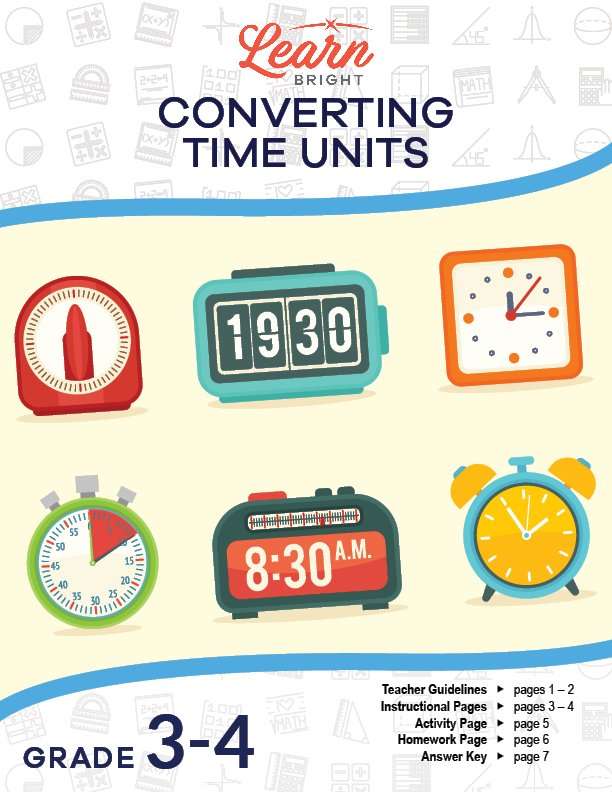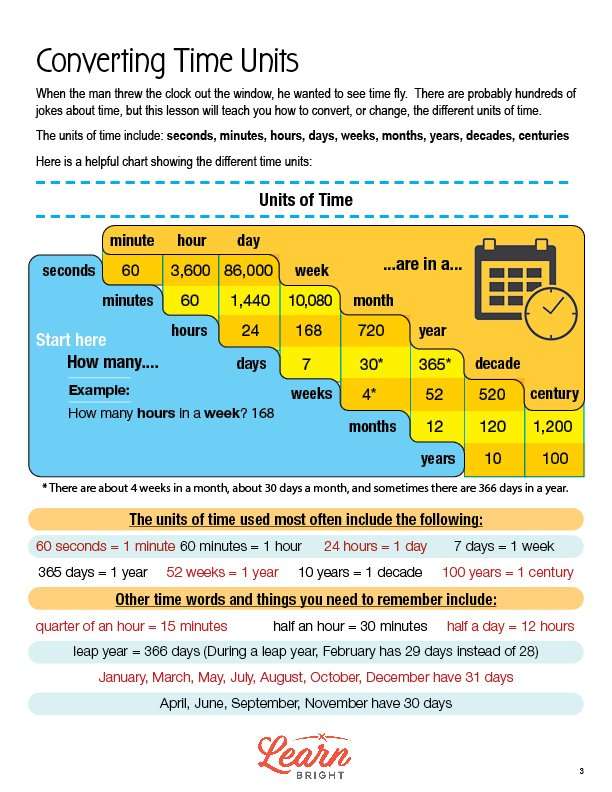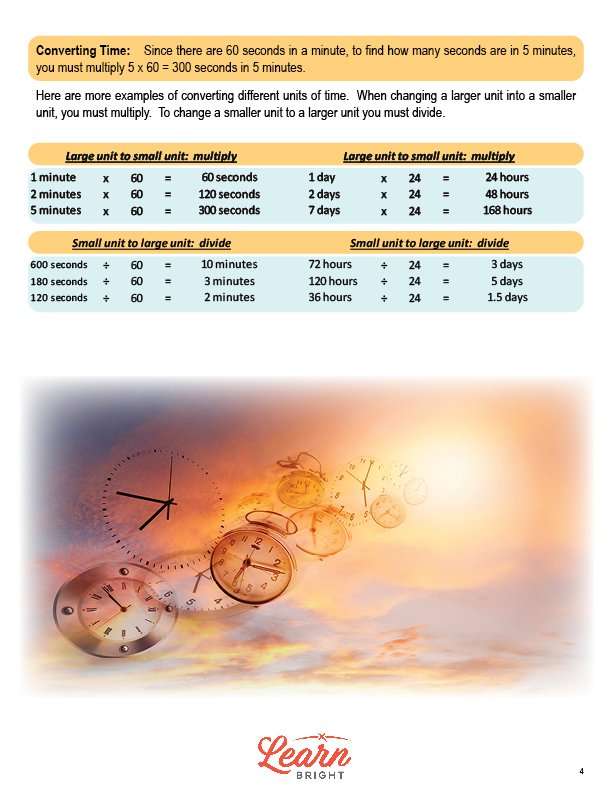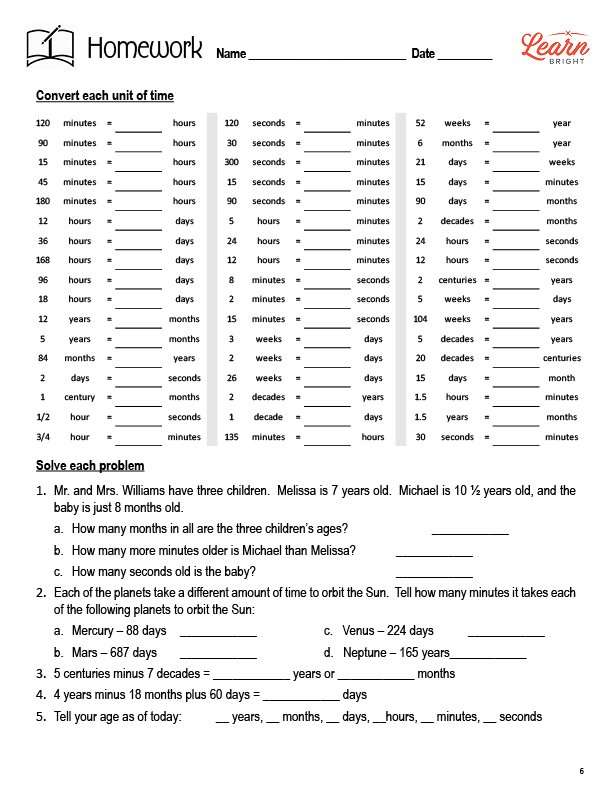Description
What our Converting Time Units lesson plan includes
Lesson Objectives and Overview: Converting Time Units identifies the basic units of time and demonstrates the operations used to change units of time. At the end of the lesson, students will be able to use multiplication and division to convert units of time using seconds, minutes, hours, days, months, and years. This lesson is for students in 3rd grade and 4th grade.
Classroom Procedure
Every lesson plan provides you with a classroom procedure page that outlines a step-by-step guide to follow. You do not have to follow the guide exactly. The guide helps you organize the lesson and details when to hand out worksheets. It also lists information in the blue box that you might find useful. You will find the lesson objectives, state standards, and number of class sessions the lesson should take to complete in this area. In addition, it describes the supplies you will need as well as what and how you need to prepare beforehand.
Options for Lesson
Included with this lesson is an “Options for Lesson” section that lists a number of suggestions for activities to add to the lesson or substitutions for the ones already in the lesson. If you’d like to add to the homework assignment, you can include the practice page for homework. An optional addition to this lesson is to pair it with a lesson on computing time passage. For additional practice, you can increase the number of word problems students must create and share with classmates. You could also have each of your students create one extra word problem, collect all of them, and turn them into a quiz/test for students. Finally, you can make sure to review the abbreviations for each time unit.
Teacher Notes
The teacher notes page includes a paragraph with additional guidelines and things to think about as you begin to plan your lesson. This page also includes lines that you can use to add your own notes as you’re preparing for this lesson.
CONVERTING TIME UNITS LESSON PLAN CONTENT PAGES
Converting Time Units
The Converting Time Units lesson plan includes two pages of content. The units of time that we use every day include: seconds, minutes, hours, days, weeks, months, years, decades, and centuries. The lesson includes a helpful chart showing how different units of time relate to each other. For example, it shows that a minute has 60 seconds, an hour has 3,600, and a day has 86,000!
The units of time we use most often include: 60 seconds = 1 minute, 60 minutes = 1 hour, 24 hours = 1 day, 7 days = 1 week, 365 days = 1 year, 52 weeks = 1 year, 10 years = 1 decade, and 100 years = 1 century. The lesson also lists some helpful conversion to remember, like that the phrase “quarter of an hour” means 15 minutes.
To convert time, we multiply or divide. If we’re going from a large unit to a small unit, we multiply. If we’re going from a small unit to a large unit, we divide. For example, if we know that a minute has 60 seconds and we want to figure out how many seconds are in 5 minutes, we multiply 5 by 60. By doing this, we find out that 5 minutes equals 300 seconds.
CONVERTING TIME UNITS LESSON PLAN WORKSHEETS
The Converting Time Units lesson plan includes two worksheets: an activity worksheet and a homework assignment. You can refer to the guide on the classroom procedure page to determine when to hand out each worksheet.
TIME CONVERSION ACTIVITY WORKSHEET
For the activity worksheet, students will create four time conversion word problems for a classmate to solve, using a different unit of time for each problem. They will create an answer key to go along with their problems.
CONVERTING TIME UNITS HOMEWORK ASSIGNMENT
The homework assignment asks students to first convert each unit of time. They will then solve five different word problems.
Worksheet Answer Keys
This lesson plan includes an answer key for the homework assignment. If you choose to administer the lesson pages to your students via PDF, you will need to save a new file that omits these pages. Otherwise, you can simply print out the applicable pages and keep these as reference for yourself when grading assignments.









